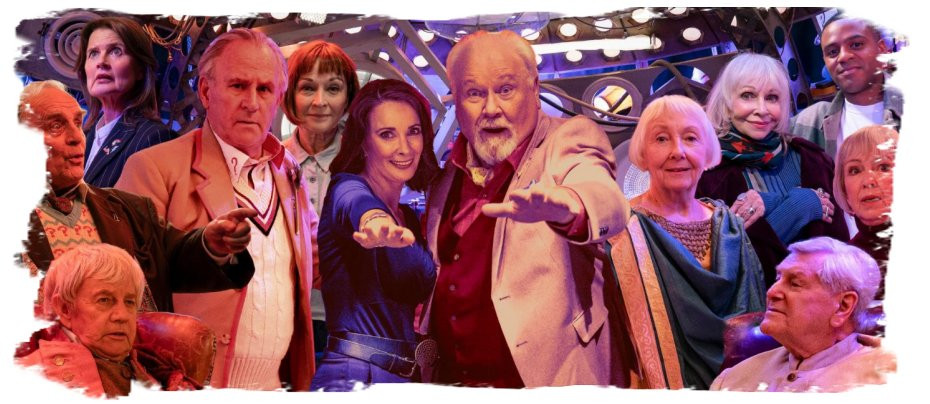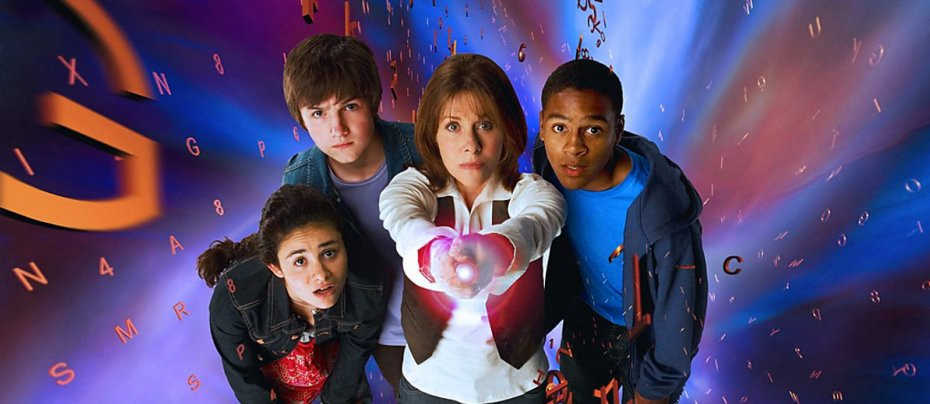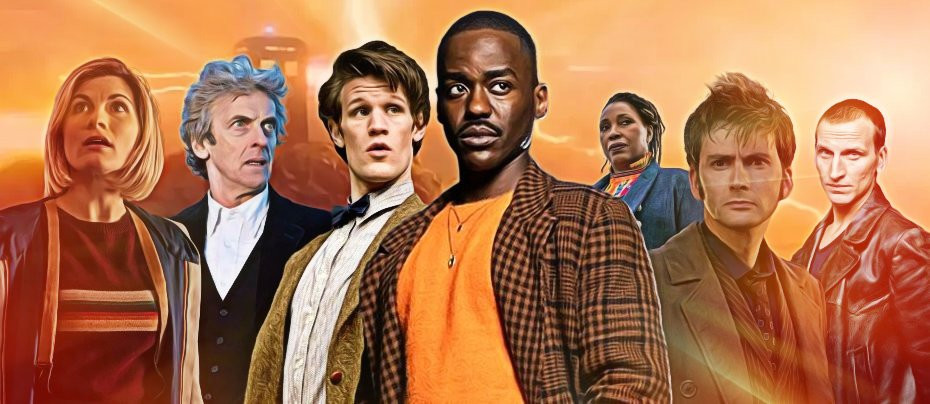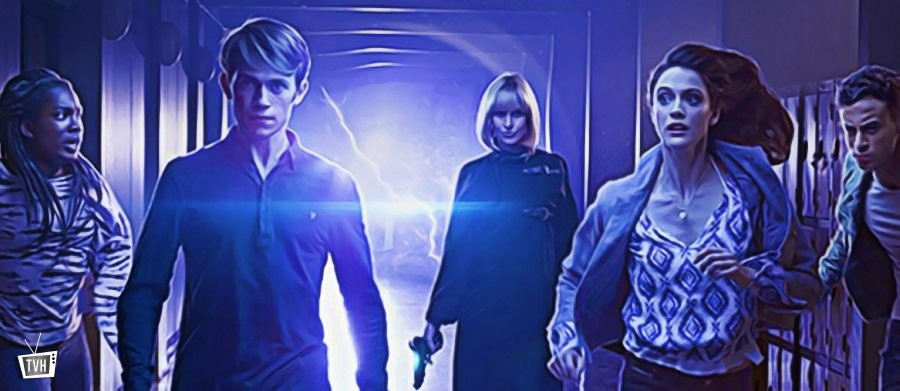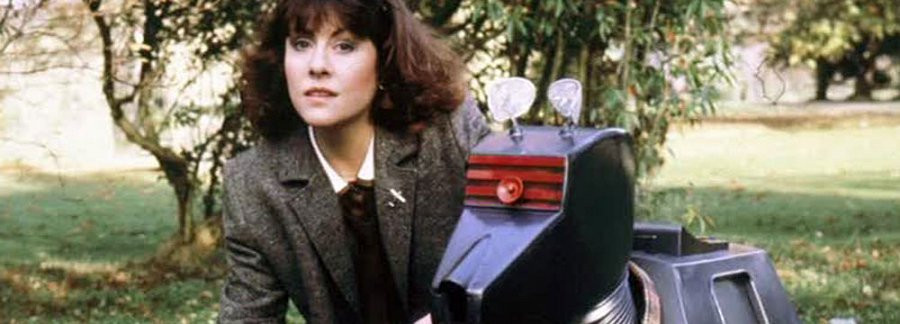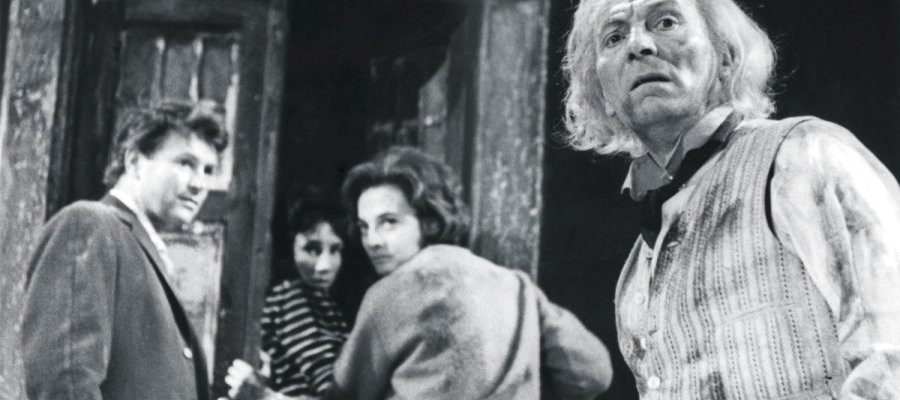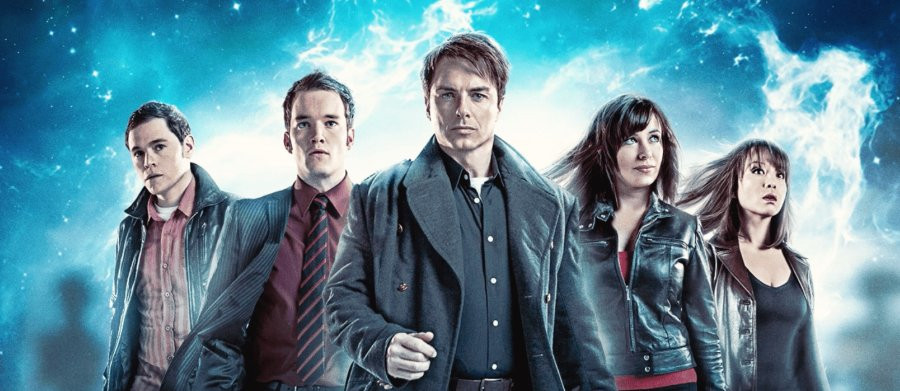The Deadly Assassin
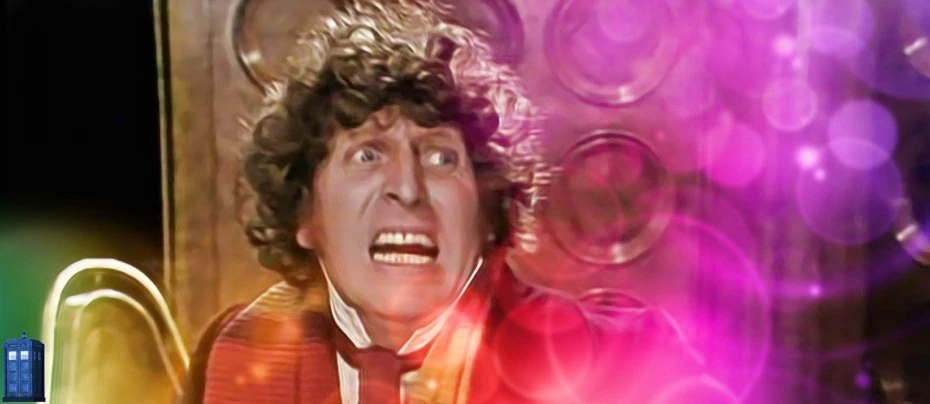
"Like it or not, Gallifrey is involved, and I'm afraid things will never be quite the same again."
Doctor Who carried on nicely for six years and went through fifty serials before the phrase "Time Lord" was uttered. Despite visiting the Doctor's home planet in the final episode of the 1960s, and with several glimpses during Jon Pertwee's run, it wasn't until his final year that the planet finally received a name: Gallifrey. It wasn't until 1976, halfway through the series' fourteenth season, that a story was set entirely on Gallifrey. The Deadly Assassin broke new ground for Doctor Who; a serial entirely concerned with the politics of the Doctor's own people and his relationship with them. Vast swathes of Doctor Who lore are created for this serial, from obscure technobabble concerning biog-data extracts to the infamous limitation on Time Lords' regenerations. The limit of twelve regenerations is merely the most obvious of this serial's contributions to the series' mythology, and yet The Deadly Assassin was notoriously poorly received by organised fandom at broadcast. Its most immediate effects, however, were to change the nature of the programme for the remainder of its initial run.
The genesis of The Deadly Assassin was the desire of the series' star to go it alone. Tom Baker, whose performance as the Doctor had helped the series reach new heights of popularity, had been pushing to do away with the traditional companion character altogether. Assassin was, in part, an attempt by producer Philip Hincliffe to not only take the opportunity to try something new and experimental in a series that was beginning to settle into a groove once more, but also to dissuade Baker by showing him that a completely Doctor-centric series wouldn't work. In both regards, the story was a qualified failure.
While a new companion would be introduced to the series in the next serial and having one or more sidekicks would remain the norm for the series, it's hard to argue that the approach taken in Assassin was very successful. For one thing, Robert Holmes, the writer of this serial, was at this point of his career seemingly incapable writing a poor script. In spite of a plot that stands up poorly to scrutiny, and an admittedly damp climax, The Deadly Assassin seethes with intrigue and Baker is never better than when pitted against an overbearing authority. Although he has no companion per se, he does have two straight men in the form of two venerable Time Lords who provide him with someone to explain things to. George Pravda provides his incomparable European diction as the acerbic Castellan Spandrell, while Erik Chitty is lovably doddery as Coordinator Engin.
The Time Lords, in their limited previous appearances, had been portrayed as an almost mystically powerful society of science wizards. Here, however, they are pulled violently down to Earth. Holmes was notoriously cynical and used his scripts to make scathing attacks on the elements of society he took exception to. There's no clear target for his satire here, unlike, say, his attack on the taxmen in his next serial The Sun Makers. Assassin takes shots at all manner of targets. The society of Time Lords is here portrayed as a mishmash of the worst excesses of the elite in our own civilisation. Their societal structure resembles nothing so much as a mix of the Oxbridge colleges and the Catholic Church. Time Lords attend respected academies, with high-ranking cardinals heading them.
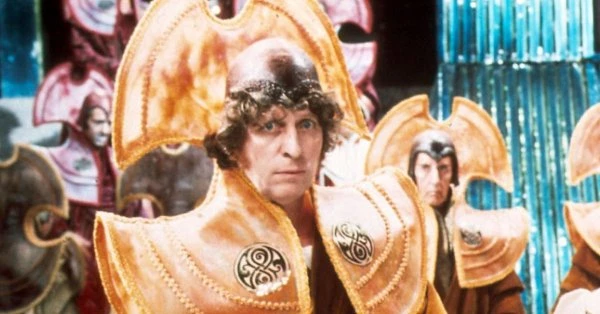
The Gallifreyan elite are, in the main, doddering old dons, conservative to the extreme and constrained by ritual. Only their most ambitious and vital members have any bite at all. They shamble lethargically around their Panopticon and their cloisters and other structures of such archaic terminology, closed to the outside universe. In this set-up, the Doctor is cast as the dropout, the shameful failure of the great Prydonian Academy. There's talk of a scandal, "all forgotten about now," and an expulsion. His old teacher even turns up, in the form of the noble Borusa; played here by Angus Mckay, but who will return several times in future stories, each time played by a different actor.
Yet, there's a large dose of American influence on this Old-World society. The plot, after all, draws heavily on The Manchurian Candidate and the assassination of John F. Kennedy. Time Lord society is ruled by a President; a common enough university title, true, but one that now brings to mind the leaders of (supposedly) democratic republics. The Presidential succession is presented as a one-horse race (something that makes the plot rather hard to swallow), even more depressingly pointless than America's two-party system. Political cover-ups are commonplace, and the security force is made up of petty thugs who engage in torture. Even the CIA gets name-checked; here retooled as the Celestial Intervention Agency, but still an untrustworthy organisation. Holmes is attacking not one organisation in particular, but the whole concept of the ruling elite. Holmes's grim sense of humour was never far from the surface, however. The second episode includes what is perhaps the series' best ever visual joke, as we glimpse a noir-esque chalk outline in the absurd shape of a Time Lord's absurdly collared robes.
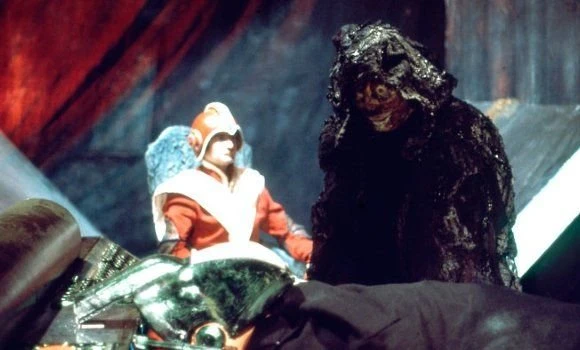
There are other elements introduced here that would be forgotten in the course of the series. The Doctor displays never again seen clairvoyance. The Time Lords, for all their power, are described as technologically primitive in many areas. There are no female Time Lords seen; indeed, save for an uncredited computer voice, there's not one female cast member. On the whole, though, the elements introduced here would return time and time again. The aforementioned regeneration limit, for instance, was dreamt up simply to provide a rationale for the plight of the Master in this story. Resurrecting the villain after an absence of three years, Holmes completely rethought the character, with the late Roger Delgado's urbane schemer replaced with a desperate creature on the edge of death. Peter Pratt's turn as the Master may have been short-lived, but it had a huge impact on the image of the character, and while later versions would return to the camper and more charming ideal, he would forever be fighting his own inevitable demise. It's surprising that, despite the final scene of the serial hinting at The Master's return, he would not be seen again until his next big revamp in 1981.
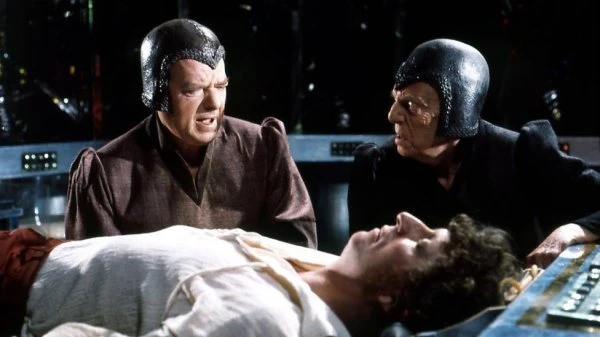
Another element that returned to the series is also prescient of the sci-fi genre as a whole. Half of the serial is taken up by an extended dream sequence that takes place in the Matrix, a computer-generated virtual reality maintained by the Time Lords. This concept would be reused to create unreal worlds in Doctor Who again, in 1986's The Trial of a Time Lord, and more recently the finale to the 2014 series, Death in Heaven. Perhaps more impressively, it predates the existence of the more famous movie The Matrix, similarly conjured up by a network of minds, by a full twenty-three years. The Matrix sequence of The Deadly Assassin begins in the second episode, running through the entirety of its third and not ending until well into its fourth, and is by far the most celebrated part of the serial.
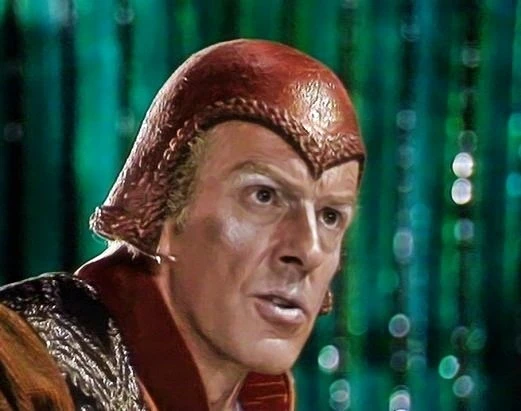
Battling not against the Master, but by his underling, the ambitious Chancellor Goth (an intense Bernard Horsfall), the Doctor fights for survival in a nightmare realm. While we might wonder why a Time Lord assassin would create such a very earthly environment, it can't be denied that the sticky hell of Goth's jungle is a powerfully unsettling realm. It's a rare sight of the Doctor in truly desperate straits, running and hiding from his assailant in torn shirtsleeves, bruised, battered and bleeding. Terrifying images assail him, from giggling clowns to samurai warriors, and he is almost mown down by a runaway train. It's the cliff-hanger ending to episode three that proved the most impactful, and indeed, controversial. The Doctor is seemingly defeated by Goth, his head held under water, with no escape when the climactic musical sting marks the end of the episode.

The National Viewers' and Listeners' Association, led by the vindictive conservative crusader Mary Whitehouse, kicked up such a stink over this admittedly unsettling and violent scene that the BBC was cowed into taking shears to the original video print. While the existing version still maintains a great impact, the original version is now long gone.
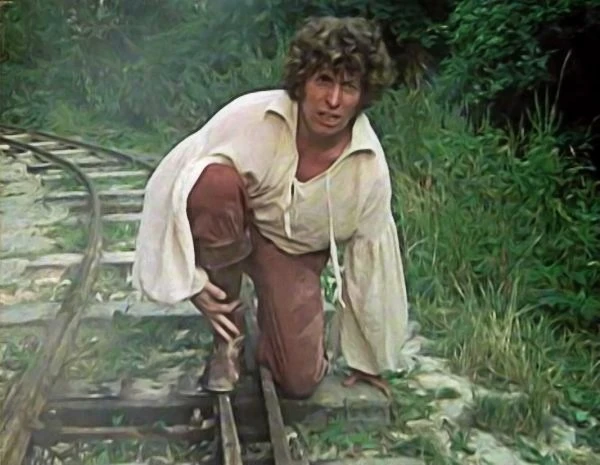
The lasting effect would be more widespread, however. Hincliffe's time as producer was curtailed, and the following season, his replacement Graham Williams was given strict guidelines on the sort of programme he was to produce. Barring a couple of holdovers from the previous team, Doctor Who would be reimagined as a more humour-driven series, with comedy given precedence over horror. Less damaging were the words of fan critics, which were less concerned by the effects on young viewers' minds than the truly important matters of continuity. The President of the once well-regarded Doctor Who Appreciation Society tore the story to pieces, lambasting it for destroying the image of the Time Lords and the "magic of Doctor Who." Yet it is this serial that has informed the version of the Time Lords throughout the remainder of the series. Everything from the imagery of the Prydonian Seal to essential elements of mythology like the Time Lord founder Rassilon began with this story and never went away, but it's in the broad strokes rather than the details that the impact is felt most. From this point on, the Time Lords were never far away, and even in the revived series were significant by their absence.
Once the Doctor returned to Gallifrey, he would never truly be free of it.
Review by Daniel Tessier


